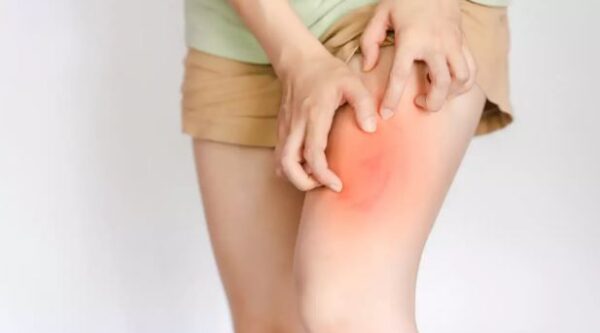Lifestyle
Skin chafing on thighs? 5 things to prevent and heal this pain

Skin chafing is a common and uncomfortable condition that occurs when skin rubs against skin, clothing, or other surfaces, causing irritation.
While it is generally not dangerous, it can be painful and lead to more severe issues if left untreated. As a dermatologist, I can offer insights into skin chafing.
Although skin chafing itself is usually not dangerous, it can cause pain, inflammation, and in extreme cases, skin breakdown and contamination if not managed nicely.
Prevention and timely remedy are vital to save you complications.” Here are some prevention tips and remedies for chafed skin:
Prevention of skin chafing
Use moisture-wicking clothing: Wear breathable and moisture-wicking fabrics to reduce friction and keep the skin dry.
Apply lubricants or anti-chafing products: Use products like petroleum jelly, anti-chafing balms, or powders in areas prone to chafing to reduce friction.
Wear properly fitting clothing: Avoid tight or ill-fitting clothing that can contribute to friction.
Stay hydrated: Proper hydration helps maintain skin elasticity and reduces the risk of chafing.
Use bandages or tape: Apply bandages or adhesive tape to areas prone to chafing, creating a protective barrier.
Choose the right footwear: Ensure that your shoes fit well and provide adequate support to prevent foot chafing.
Take breaks: If concerned in activities with repetitive movements, take normal breaks to permit your pores and skin to relaxation and recover.
How to cure and get relief from skin chafing
Clean the affected area: Gently wash the chafed area with mild soap and water to remove any irritants.
Apply moisturizer: After cleaning, observe a relaxing moisturizer or restoration ointment to resource skin recovery and prevent similar infection.
Keep the area dry: Pat the affected area dry and avoid moisture, as it can worsen chafing.
Apply a soothing ointment: Use over-the-counter creams or ointments containing ingredients like aloe vera or calendula to soothe the irritated skin.
Use cold compresses: Applying a cold compress can help reduce inflammation and provide relief.
Avoid further irritation: Wear loose-fitting clothing and avoid activities that may exacerbate chafing until the skin heals.
Over-the-counter pain relievers: Non-prescription pain relievers can help manage pain and reduce inflammation.
Use bandages or dressings: For intense chafing, keep in mind overlaying the affected place with a bandage or dressing to protect it from similar friction.
Avoid nerve-racking the place: Try to refrain from activities or wearing clothing that could get worse chafing until the pores and skin has completely healed.
When to seek medical help?
If chafing results in open wounds, symptoms of contamination (which include redness, swelling, or pus), or if it does not improve with domestic care, seek advice from a dermatologist or healthcare professional for in addition evaluation and remedy.
If the chafing persists or shows signs of infection, such as increased redness, swelling, or oozing, it’s essential to consult a healthcare professional for proper assessment and treatment.
Remember that prevention is key, so taking proactive steps to avoid chafing is the best approach. Maintaining accurate skin hygiene, choosing suitable clothing, and implementing preventive measures are essential for decreasing the risk of skin chafing and selling skin fitness.






